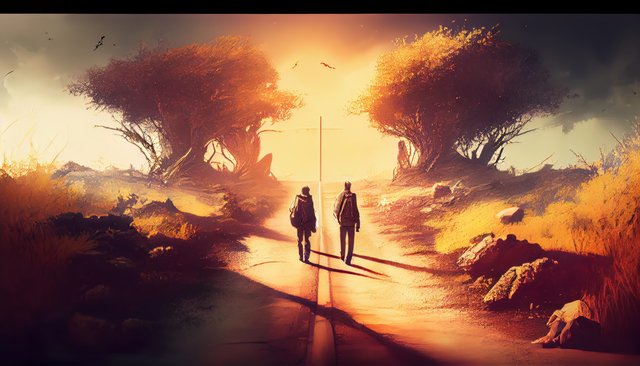Scattering Ashes Together: A Final Journey for Couples Who Lived and Loved Together
For many couples, the idea of being apart even after death is an unimaginable thought. The bond that forms over years of companionship, adventure, and shared experience is not something that simply fades away. In fact, for some couples, the desire to remain together—side by side, even in death—becomes an important and meaningful choice.
While modern options like scattering ashes together in a beautiful, symbolic location have become increasingly popular, the enduring desire for couples to be together, even in the afterlife, is not a new concept. History is filled with stories of couples who have shared lives and legacies, and whose love extended well beyond their time together on Earth.
One such example is John and Abigail Adams, whose enduring partnership offers a poignant example of why couples today may choose to be scattered together.
The Enduring Love of John and Abigail Adams
The story of John and Abigail Adams is one of intellectual equality, profound love, and separation only by distance—not by choice. John Adams, the second president of the United States, and Abigail Adams, his wife and First Lady, shared a bond that transcended not only the years of their marriage but also the physical distance that often separated them during John's long absences due to his political and diplomatic work. Their relationship is documented most famously through their extensive correspondence, which spanned decades.
Joseph Ellis, in his book First Family: Abigail and John Adams, highlights how these letters—more than 1,000 in total—were an essential part of the Adams’ connection, providing a window into their lives and love. According to Ellis, the letters they exchanged were meant not just for themselves but for posterity, a record of their enduring love and their roles in shaping America’s future.
In one remarkable letter, Abigail wrote to John while she was in labor with one of their children, an event that was not discussed openly in the 18th century. This letter, like so many others, provides insight into their personal lives, intellectual debates, and the deep affection they shared for each other, even during their long separations. They were intellectual equals, partners in every sense of the word, and the letters they wrote to each other reflected their partnership.
John’s desire to preserve their correspondence speaks volumes about the profound connection they had. He carefully collected Abigail’s letters in a leather binder and urged her to do the same, indicating that they were not only valuable to him but were also meant to withstand the test of time. Ellis notes that John Adams, as he grew older, realized the true significance of these letters, not just as personal records but as a monumental part of American history.
A Symbolic and Meaningful Memorial for Couples
The story of John and Abigail Adams and their shared intellectual and emotional journey offers a powerful example of why couples today may choose to be scattered together. Just as the Adamses created a physical and emotional bond through their letters, modern couples can use joint ash scattering as a way to celebrate their lives together, even in death.
The choice to scatter ashes together allows couples to express their shared values, experiences, and love for one another in a way that honors both the past and the future. Whether it’s a favorite natural location, a place that holds personal significance, or a spot that symbolizes their shared passions, couples can choose to remain together in spirit, just as John and Abigail Adams remained united through their letters.
In fact, for couples who spent their lives intertwined through mutual love, respect, and shared experiences, the act of scattering ashes together can be a powerful and final symbol of unity. The location where the ashes are scattered becomes a place of shared memory, a lasting tribute to a life well lived and a love that continues beyond death.
Why Couples Are Choosing Joint Ash Scattering
The decision to scatter ashes together is becoming an increasingly popular choice among modern couples who wish to remain united forever. According to recent surveys, the concept of joint ash scattering is growing in popularity as couples seek a final resting place that reflects their shared life journey. This is particularly true for couples who have lived adventurous lives, traveled together, or spent years building a home and family.
A 2024 survey conducted by the National Funeral Directors Association (NFDA) found that 68% of respondents expressed an interest in eco-friendly and personalized funeral options, including scattering ashes in unique and meaningful locations. Joint ash scattering offers an ideal way for couples to honor their shared legacy while keeping their memory alive in a beautiful, natural setting.
Couples often choose locations that have significance to their relationship—whether it’s a place where they spent a memorable vacation, a spot they frequented together, or simply a location that holds deep emotional meaning. These locations can vary from national parks, beaches, forests, to mountains, offering a wide variety of beautiful, serene spots where couples can be scattered together, side by side.
The Legacy of Love: A Final Tribute
The decision to scatter ashes together is not just about the practicalities of choosing a location—it is an act that holds deep emotional and symbolic significance. For couples like John and Abigail Adams, whose relationship was defined by love, mutual respect, and shared intellectual pursuits, a final resting place together honors the legacy of their partnership.
Just as the Adamses’ letters became a way for them to stay connected and preserve their shared history, the act of scattering ashes together allows modern couples to symbolically preserve their shared experiences and bond in a meaningful way. The location chosen becomes a lasting tribute—a place where their love and life can be remembered for generations to come.
The Adamses’ story reminds us that love doesn’t end with death. Their letters, preserved for posterity, offer a testament to their undying affection for one another, and the same sentiment is reflected in joint ash scattering. Whether it’s a natural setting, a cherished destination, or a meaningful place, scattering ashes together offers a final way for couples to remain united, even in death, and to continue their shared journey through eternity.
Conclusion: Together in Life, Together in Death
Couples like John and Abigail Adams remind us that love knows no boundaries—not even the boundaries of time and death. Their enduring letters, carefully preserved for future generations, became a symbol of their commitment to one another, just as joint ash scattering can become a final testament to the love and unity of couples today.
For those couples who choose to be scattered together, the act is more than just a memorial—it’s a final celebration of life, love, and togetherness. The place where their ashes are scattered becomes a symbol of their shared journey and the enduring connection that they built together.
Whether in a peaceful national park, a tranquil beach, or a place full of memories, couples who choose to scatter ashes together leave behind not just a physical resting place, but a profound legacy of love and unity—just like the Adamses’ letters—a connection that lives on long after they are gone.
A Final Journey Together
The choice to scatter ashes together as a couple is a deeply personal one, and for those who wish to honor a lifetime of love, it can be a meaningful final tribute. As demonstrated by the story of John and Abigail Adams, love, even in death, can remain undivided, and the places where couples are scattered together can carry a lasting significance that echoes through time. For modern couples who choose to journey together into eternity, scattering ashes provides an opportunity to stay united and celebrate the love that transcends the boundaries of life itself.






























This comprehensive guide to scattering ashes at sea walks you through every step of the journey—from the practical to the profoundly meaningful.
You'll find everything you need to know, including EPA regulations and legal requirements, how to prepare for ocean conditions, what to say or read during a scattering ceremony, and the emotional and environmental benefits of choosing the sea as a final resting place.